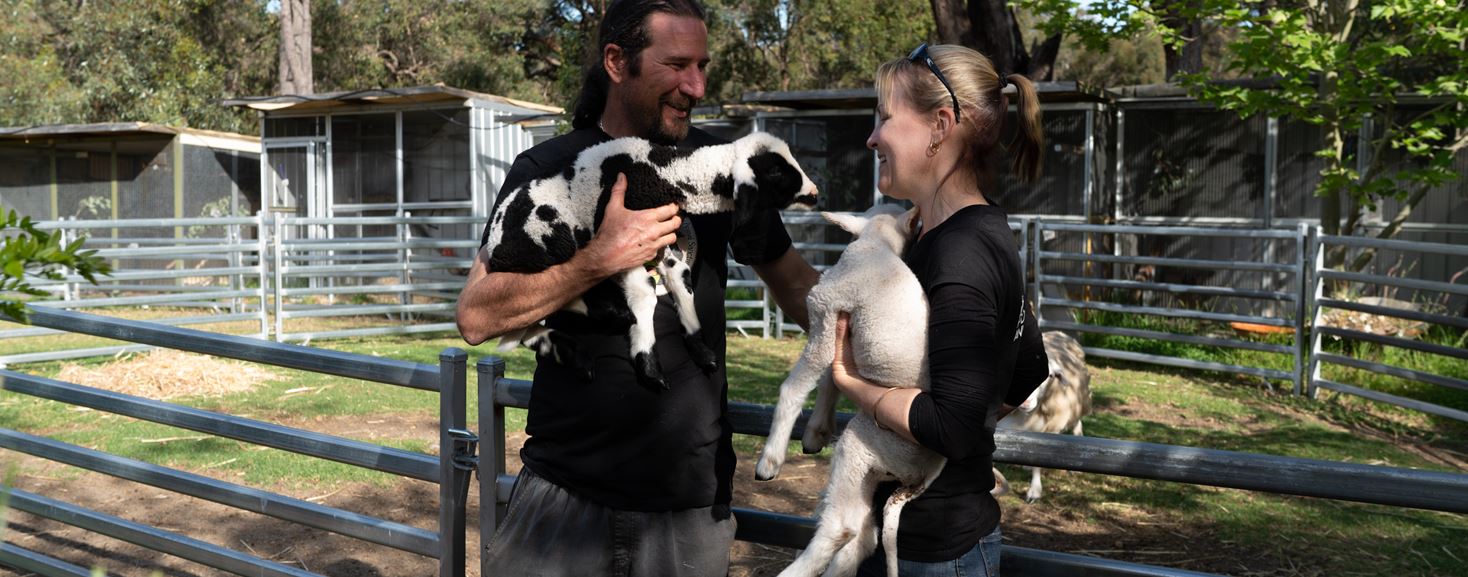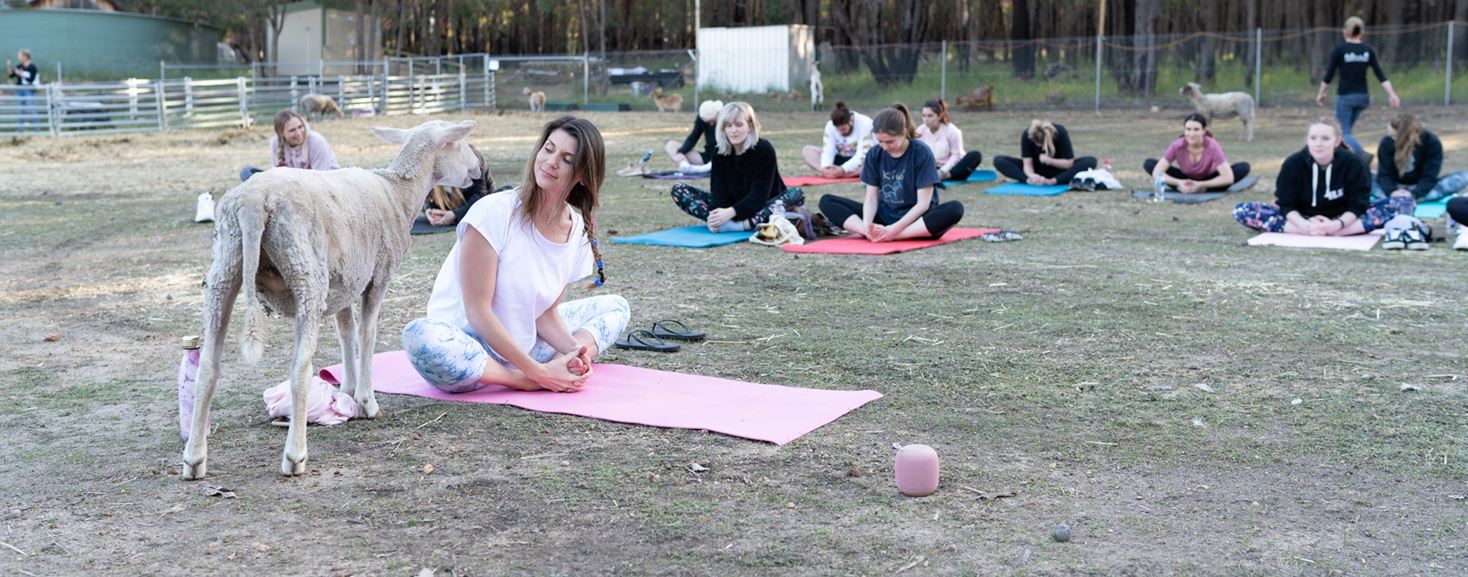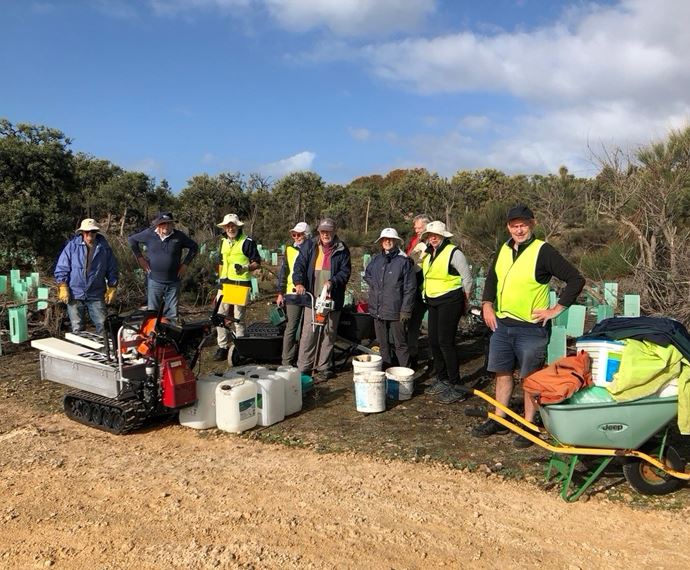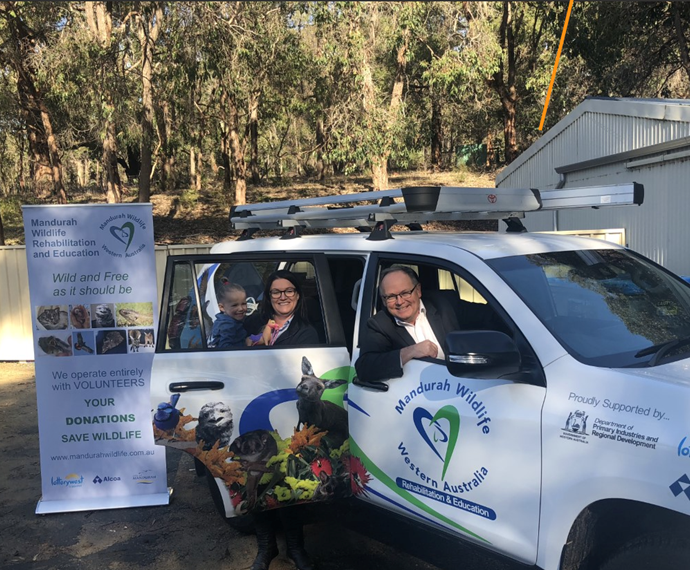Protecting the animals of Possum Valley
Possum Valley Animal Sanctuary (PVAS) was established in 2015 with the purpose of preventing or relieving the suffering of animals and advancing the natural environment. The organisation achieves this by providing a rescue, rehabilitation, release and rehoming service for orphaned, injured, neglected, unwanted or displaced animals. Through this grant, Possum Valley was able to build their capacity through the installation of new essential infrastructure.
To provide volunteer amenities to support the rescue and rehabilitation of native, domestic and farm animals.
Possum Valley Animal Sanctuary Inc
2/27/2019
$35,445
Lotterywest
$25,664
Perth Metropolitan
General Community
- Reliable access to power has facilitated expanded capacity as the Possum Valley Sanctuary fire strategy no longer depends on being able to evacuate all animals.
- The addition of an ablution block provides ready access for volunteers at all times, increasing volunteer numbers.
- Ability to host bigger events, without having to hire portable toilets.
- Strategic investment in capital has enabled the organization to work more sercurely and effectively in a bushfire zone.
- Increased accessibility and volunteer facilities with the addition of a universal ablution block and shower.
- Reducing dependence on mains power and an increase in volunteer numbers has resulted in increased capacity for animal care.
- The grant was the first of this scale for Possum Valley, and some unexpected costs arose throughout the build.
- The ablution block waste tank needs to be emptied more frequently than anticipated.

Opportunity
Animal sanctuaries are typically created to care for animals rescued from a range of contexts from farming to entertainment, research and as pets [1]. Volunteer groups play a large role in ensuring that animals in need receive adequate care. Native wildlife rescue and rehabilitation efforts in Australia are primarily staffed by volunteers who undertake physically, mentally, emotionally and financially demanding work [2].
Possum Valley receives calls to help animals every day of the year – this includes native animals from veterinarians, the State Government’s Wildcare Helpline, or people from the local area. The Sanctuary also takes in farm animals from all over the state, whether they have been found injured, unwell, stray and impounded, or in an inappropriate location or home.
Located in Mount Helena in the Perth Hills, the Sanctuary is within a bushfire prone area as identified by the WA Department of Fire and Emergency Services. This means the property needs to have a detailed plan in place to protect its residents in the case of a bushfire.
Approach
Through the grant, PVAS was able to upgrade some of its facilities to provide a safer environment for animals and volunteers alike. The organisation also purchased a generator to deliver a reliable and consistent power and water supply. As water is pumped from rainwater tanks or bore on the property, before the generator was installed, losing power meant losing water sources for the animals.
This is also important in the event of a fire, as the organisation will now be able to run the electric water pumps required to fight fire even when mains power is out. Access to a reliable water source in a bush fire event is critical, given that there is often no time to evacuate over 250 animals from the property in an emergency situation.
Another important upgrade was the addition of a universal ablution block with a shower. Previously, the only toilet was located in the private residence of the Sanctuary coordinators. The shower allows volunteers to clean up and improve bio-security measures, provides facilities for volunteer workers and complements existing 'wash down protocols' to ensure potential animal disease is controlled. The nature of the work at the Sanctuary means that volunteers are often working in dusty and dirty enclosures, sometimes including contact with sick or quarantined animals.
Impacts and outcomes
The new generator provided the Sanctuary with access to reliable power, an essential resource to run the fridges, freezers, air conditioners, washing machines and water pumps that keep its residents fed, watered, clean and comfortable. With an independent power source, the centre was able to expand its capacity as its fire strategy no longer depended on being able to evacuate all animals.
Fortunately, Possum Valley hasn’t had to implement its fire safety plan. However, having independent power is also essential in the event of a blackout, which is not an infrequent occurrence in the area. With blackout events lasting more than eight hours, previously Possum Valley risked losing perishable foods and medicines requiring cold storage.
The addition of the ablution block has also marked a big change for the organisation. The facilities now provide ready access for volunteers, whether the owners are home or not, and has meant an increase in volunteers working at the Sanctuary. Around four volunteers might be onsite during the week, and on the weekend there can be anywhere from six to 15 people. Possum Valley also organises busy bees every three or four months with 20-25 participants. The contribution of volunteers is diverse, ranging from weekly cleaning, gardening, and laundry to specific tasks like picking up animals, events, coordination of animal rehoming, and audio-visual production.
The property holds events focusing on community education and engagement, as well as fundraising. These include:
- Tours and goat yoga
- Workshops (for example flower arrangement)
- Pizza in the paddock
- Community Christmas carols
Some of the bigger events can attract between 150 and 200 people. Previously, the organisation would have needed to spend around $500 on portable toilet hire but with the new facility, Possum Valley saves money which can then be redirected into caring for their animal residents.

What worked
Building organisational capacity
The grant enabled the organisation to work more securely and effectively by providing a single capital investment which was beyond the organisation’s ability to fundraise. Fundraising work in this sector often relies on a small number of individuals, limiting an organisation’s ability to make those bigger changes and larger asset purchases.
Attracting more volunteers
The new facility has allowed Possum Valley to attract and maintain more volunteers. This has in turn allowed the centre to accept more animals, with more resources now to care for them.
Key challenges
Some unexpected costs
The grant application represented the first big application for the organisation and there were some issues with unexpected costs. These included electrical cabling which was more costly than expected and the requirement to empty the ablution block waste tank more frequently than anticipated.
REFERENCES
- Abrell, E. (2019). Animal Sanctuaries. In B. Fischer (Ed.), The Routledge Handbook of Animal Ethics. Taylor & Francis Group. http://ebookcentral.proquest.com/lib/uwa/detail.action?docID=5988928
- Englefield, B., Candy, S., Starling, M., & McGreevy, P. (2019). The Demography and Practice of Australians Caring for Native Wildlife and the Psychological, Physical and Financial Effects of Rescue, Rehabilitation and Release of Wildlife on the Welfare of Carers. Animals, 9(12), 1127.
Learn about wellbeing
Understand how your community is going to help you to better target and plan your project.
Ready to plan your project?
Understand your vision, plan your impact and report on the outcomes of your project with three easy interactive tools in the Community Impact Planner.
Acknowledgement of Country
The Western Australian Community Impact Hub acknowledges and pays respect to the Traditional Owners of the land on which we are based, the Whadjuk people of the Noongar Nation and extends that respect to all the Traditional Owners and Elders of this country. We recognise the significant importance of their cultural heritage, values and beliefs and how these contribute to the positive health and wellbeing of the whole community.
![Mt Gibson Brad Leue AWC[1]](/media/klfbvjje/mt_gibson_brad_leue_awc-1.jpg?anchor=center&mode=crop&width=690&height=570&rnd=133045353289800000&quality=80)
![Carnaby's Cockatoo Flying Over Restoration On Monjebup Reserve. Photo By Krysta Guille[1]](/media/3xkoo5ve/carnaby-s_cockatoo_flying_over_restoration_on_monjebup_reserve-_photo_by_krysta_guille-1.jpg?anchor=center&mode=crop&width=690&height=570&rnd=133053022173100000&quality=80)


